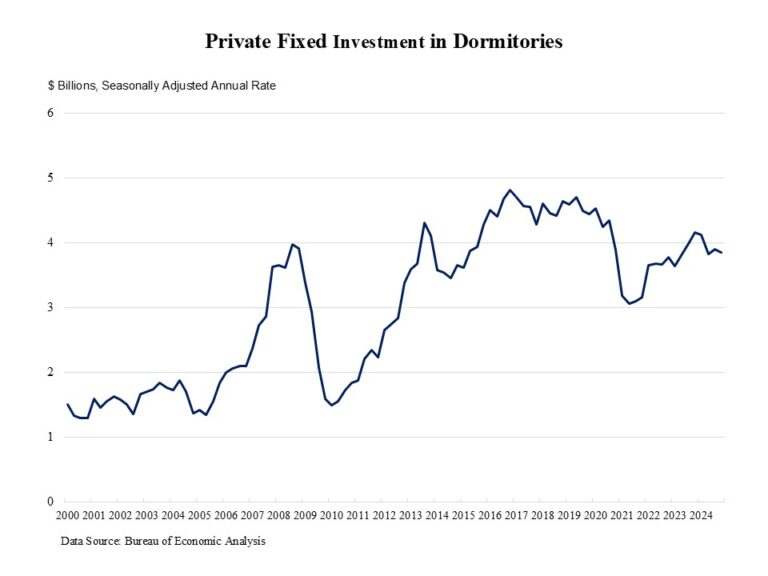Private fixed investment in student dormitories edged down by 1.3% in the fourth quarter of 2024, reaching a seasonally adjusted annual rate (SAAR) of $3.86 billion. This decline follows a 1.9% increase in the prior quarter. However, private fixed investment in dorms was 7.2% lower than a year ago, as the elevated interest rates place a damper on student housing construction.
Private fixed investment in student housing experienced a surge after the Great Recession, as college enrollment increased from 17.2 million in 2006 to 20.4 million in 2011. However, during the pandemic, private fixed investment in student housing declined drastically from $4.4 billion (SAAR) in the last quarter of 2019 to $3 billion in the second quarter of 2021, as COVID-19 interrupted normal on-campus learning. According to the National Student Clearinghouse Research Center, college enrollment fell by 3.6% in the fall of 2020 and by 3.1% in the fall of 2021.
Since then, private fixed investment has rebounded, as college enrollments show a slow but stabilizing recovery from pandemic driven declines. Effective in-person learning requires college students to return to campuses, boosting the student housing sector. Furthermore, the demand for student housing is growing robustly, because total enrollment in postsecondary institutions is projected to increase 8% from 2020 to 2030, according to the National Center for Education Statistics.
Despite recent fluctuations, the student housing construction shows signs of recovery and is expected to grow in response to increasing student enrollment projections.
Discover more from Eye On Housing
Subscribe to get the latest posts sent to your email.
This article was originally published by a eyeonhousing.org . Read the Original article here. .

